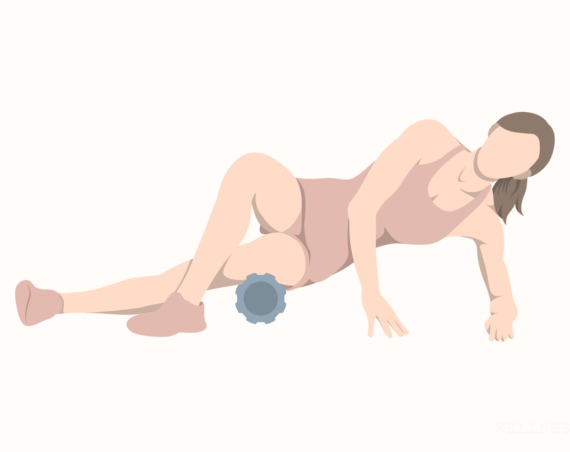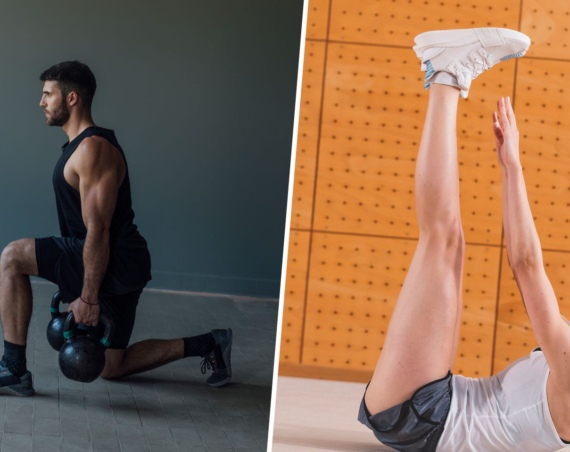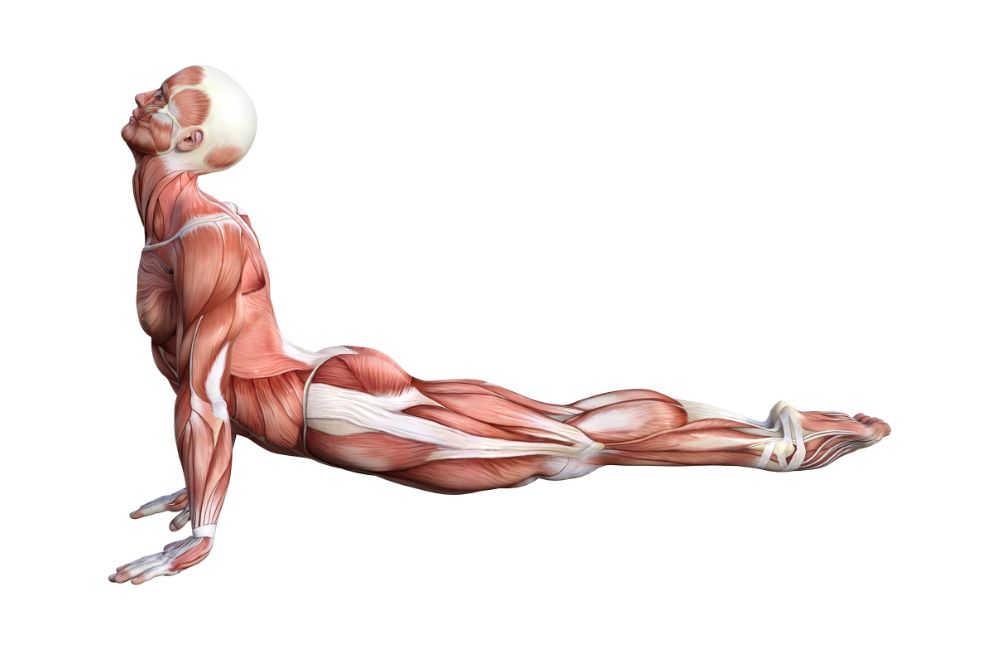
Lower back pain can be excruciating. They often appear or repeat out of nowhere. Having one or two exercises you can go to for some lower back pain relief is crucial.
For me is the Mckenzie exercises, particularly the Mckenzie prone press-up. In this article, I’ll share what the Mckenzie press-up is and how to do it to get instant relief.
Robin Mckenzie is a figure known by physical therapists around the globe. Years ago, he created a revolutionary method for diagnosing and treating back pain. His treatment style became known as the “Mckenzie Method” and certain exercises are now known simply as “Mckenzie exercises.”
One exercise that is commonly used by Mckenzie-certified PTs for the treatment of back pain is the prone press-up.
You’ll also like:
Bulletproof Your Hips and Lower Back With This Simple Daily Stretch
3+ Exercises That’ll Stretch and Elongate Your Spine After Sitting All Day: No More Back Pain
What Is the Mckenzie Prone Press Up?
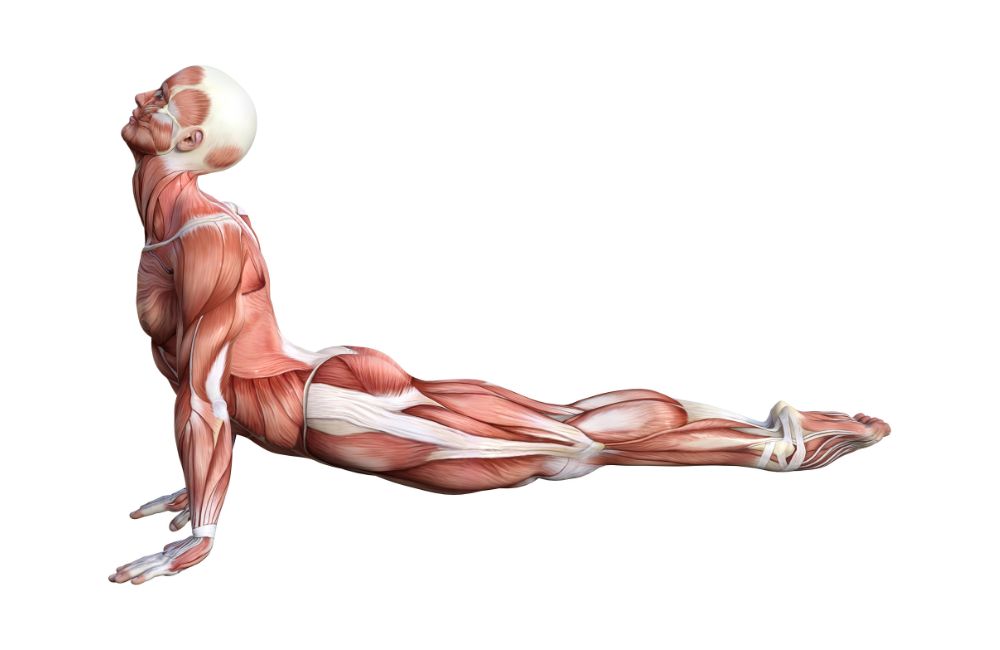
The prone press-up is a movement that yoga enthusiasts might know better as “upward dog.”
This exercise encourages spinal extension, and Mckenzie therapists often prescribe this exercise for patients with low back pain.
In all honesty, the discussion of why extension seems to improve low back pain is quite complicated, is often disputed, and is well beyond the scope of this post. For our purposes, suffice it to say that the prone press-up helps with back pain for the following reasons:
- It improves and encourages the extension of the range of motion, which we rarely achieve throughout a typical day.
- It stretches out some of the chronically tight structures on the front of our body.
Beyond the two considerations listed above, the prone press-up just feels great!
It’s worth mentioning, however, that certain people should not attempt a prone press-up. There are some spinal conditions that can be made worse by hyperextension. Therefore, if you have back pain, it’s always best to consult with your doctor or physical therapist before beginning an exercise regimen.
How to Perform the Mckenzie Prone Press Up
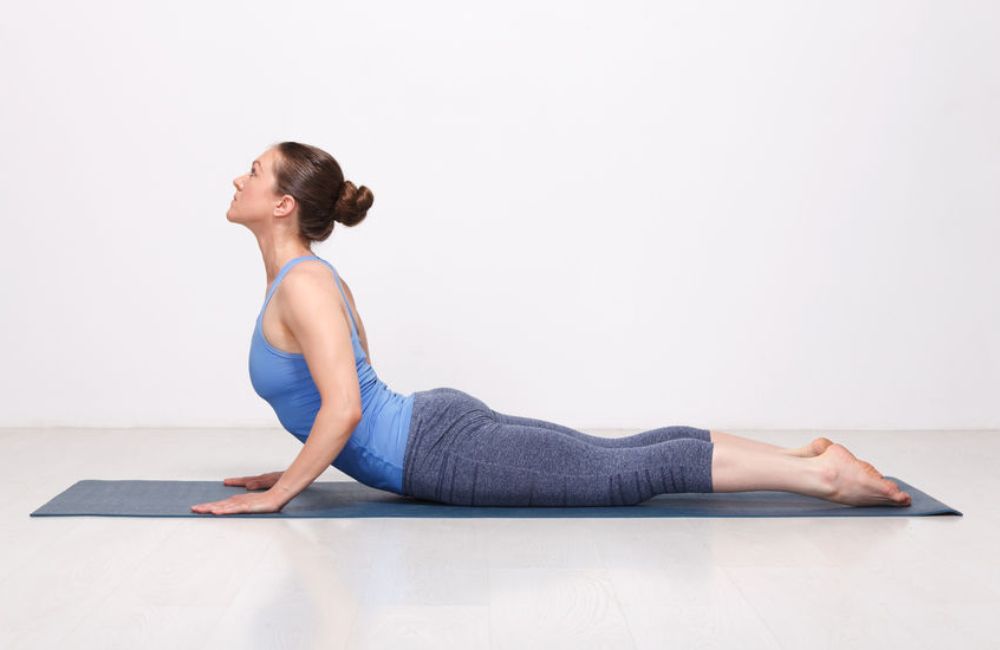
To correctly perform a prone press-up, follow the steps listed below:
- Start by lying on your stomach for at least 1 minute.
- If you do not have any pain in this position, prop yourself up on your elbows.
- If this position causes you no further discomfort after another minute, attempt to place your hands on the floor and press yourself up into further extension.
- During this stretch, your hips should remain on the ground and your spine should bend backward.
- Hold the stretch for 1-2 seconds, ensuring that you are taking deep, even breaths and that you are not experiencing any pain.
- Return to lying flat on the floor after 1-2 and repeat the stretch 10 times per session, 3-5 days a week.
According to many Mckenzie therapists, you can even perform these exercises multiple times a day, if they seem to be helping your symptoms.
Furthermore, there are different parameters for how long to hold the stretches. The instructions listed above outline how to perform REIP (Repeated Extensions in Prone). However, your therapist may decide that you would benefit from longer, sustained stretches. In this scenario, he or she may instruct you to hold the stretch for up to 30 seconds and to complete fewer repetitions.
During this exercise, if you experience any increased tingling, numbness, or pain, you should stop immediately and call your doctor.
Other Mckenzie Exercises for Back Pain Relief
The prone press-up is one of the most fundamental Mckenzie exercises. However, other Mckenzie exercises can also help back pain sufferers.
Repeated Extensions in Standing
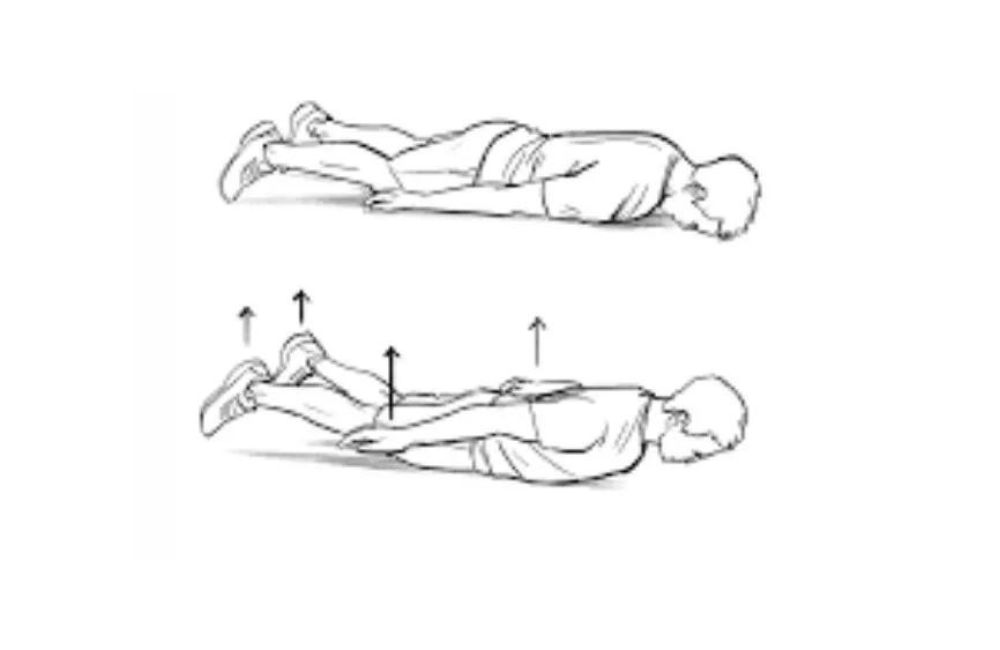
To perform repeated extensions in standing:
- Start with your feet hip-width apart.
- Next, you’ll place both of your hands on your low back as you slowly extend back as far as you can comfortably.
- Hold this position for 1-2 seconds, then return to the starting position.
- Repeat this motion for 10 repetitions per session, at least 3-5 sessions per week.
This exercise is a progression from the prone press-up, so be sure that you have mastered the exercise in prone before attempting to perform repeated extensions in standing.
Supine Flexion
While most Mckenzie therapists will start with extension-based movements, they will eventually incorporate some flexion as well. Supine flexion is performed as follows:
- Lying on your back with your knees bent and feet flat on the floor ensures that you have no pain or symptoms.
- Next, lift both knees towards your chest, hugging your legs tightly with both hands.
- Hold the stretch for 1-2 seconds, then release your legs back to the starting position.
- Perform 10 repetitions per session, and at least 3-5 sessions per week.
Flexion can often cause discomfort for back pain sufferers with specific conditions. Pay close attention to what you are feeling while you perform this exercise!
Seated Flexion
The next progression in Mckenzie’s exercises is often seated flexion. To perform seated flexion:
- Sit on the edge of a firm, stable chair.
Bend your back so that your chest moves toward your thighs as your hands move toward the floor.
- Reach as far as you can comfortably and hold the stretch for 1-2 seconds.
- Repeat 10 times per session and perform at least 3-5 sessions per week.
Seated flexion serves as the bridge between supine flexion and standing flexion, listed below.
Standing Flexion
This exercise is generally considered to be one of the more advanced Mckenzie exercises. In order to perform standing flexion:
- Stand with feet separated to roughly the width of your hips.
- Without allowing your knees to bend, fold forward toward the ground.
- Once you’ve reached your maximal point of stretch, hold for 1-2 seconds.
- Return to the initial position to complete the rep.
- Complete 10 repetitions per session, and 3-5 sessions or more each week.
You don’t need to stretch too far on this exercise. Always pay attention to your pain levels and don’t overdo it!
The Bottom Line
The Mckenzie Method is a popular treatment and diagnostic tool for addressing low back pain. While there are other ways to go about relieving back pain, the Mckenzie Method has excellent results and is easy to implement.
If you have back pain and it feels like you’ve tried everything already, give some consideration to the Mckenzie Method!
References
- Namnaqani, F. I., Mashabi, A. S., Yaseen, K. M., & Alshehri, M. A. (2019). The effectiveness of McKenzie method compared to manual therapy for treating chronic low back pain: a systematic review. Journal of musculoskeletal & neuronal interactions, 19(4), 492–499.
- Fahmy, E., Shaker, H., Ragab, W. et al. Efficacy of spinal extension exercise program versus muscle energy technique in treatment of chronic mechanical low back pain. Egypt J Neurol Psychiatry Neurosurg 55, 77 (2019). https://doi.org/10.1186/s41983-019-0124-5

